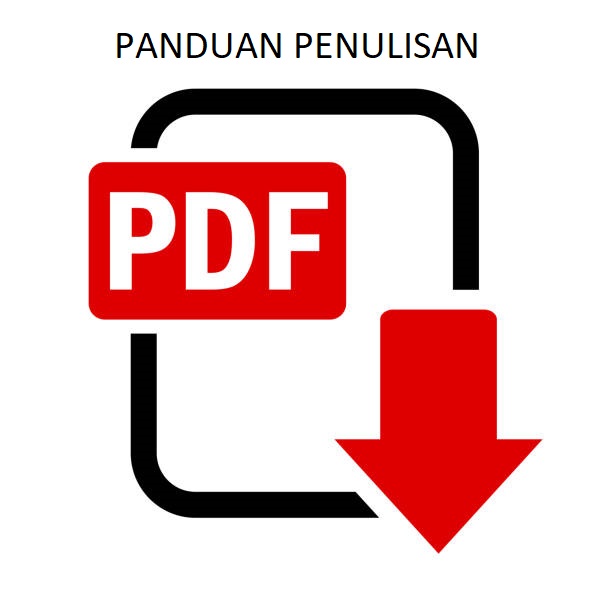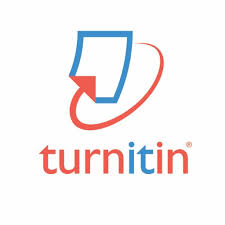Effect of Fins on Charging Performance – Release of a PCM-Based Thermal Energy Operating Simultaneously
DOI:
https://doi.org/10.35814/teknobiz.411pja74Keywords:
PCM, Penyimpan Energi Termal, SimultanAbstract
The use of organic phase change materials (PCMs) has been widely applied as a filling material for thermal energy storage units (TES) due to its relatively low cost, easy availability, and stable temperature during phase change. However, on the other hand, phase change materials have low thermal conductivity, which results in slow operation duration, considered as a drawback. To address this issue, the use of fins inserted into the PCM in a simultaneously operating TES unit is proposed. The effects of flat and pipe aluminum fins were observed in a TES unit using palmitic acid (PA) and myristic acid (MA) as PCMs, resulting in four experimental variations: palmitic acid - flat aluminum fins (PA1), palmitic acid - pipe aluminum fins (PA2), myristic acid - flat aluminum fins (MA1), and myristic acid - pipe aluminum fins (MA2). These variations were tested from ambient temperature up to the PCM temperature of 90°C and back to ambient temperature. The results showed that visually, PCM melts and freezes earlier in the areas near the fins. Based on the experimental data, PA1 was 4.5% faster than PA2, and MA1 was 8.1% faster than MA2 in terms of TES operation duration. Therefore, it can be concluded that the use of flat aluminum fins makes the operation duration faster compared to pipe aluminum fins. The simultaneous operating system caused the exhaust temperature to increase by an average of 11.1°C during the charging process, while during discharging, the exhaust temperature decreased by an average of 14.5°C across the entire TES unit.
Downloads
References
World Energy Transitions Outlook 2023 : 1.5°C pathway. International Renewable Energy Agency IRENA, 2023.
[2] L. Janeiro et al., Renewable Energy Prospect for Central and South-Eastern Europe Energy Connectivity. 2020.
[3] K. Addai, D. Kirikkaleli, G. O. A. Ampong, and M. Yufenyuy, “Assessing long run asymmetric effect of urbanization, fossil energy consumption and regulatory quality on environmental degradation in the Black Sea Region: A dynamic analysis,” World Development Sustainability, vol. 4, Jun. 2024, doi: 10.1016/j.wds.2024.100153.
[4] D. O. Obada et al., “A review of renewable energy resources in Nigeria for climate change mitigation,” Case Studies in Chemical and Environmental Engineering, vol. 9, Jun. 2024, doi: 10.1016/j.cscee.2024.100669.
[5] P. K. Adom, “Global energy efficiency transition tendencies: Development phenomenon or not?,” Energy Strategy Reviews, vol. 55, Sep. 2024, doi: 10.1016/j.esr.2024.101524.
[6] D. S. A. Suroso, B. Setiawan, P. Pradono, Z. S. Iskandar, and M. A. Hastari, “Revisiting the role of international climate finance (ICF) towards achieving the nationally determined contribution (NDC) target: A case study of the Indonesian energy sector,” Environ Sci Policy, vol. 131, pp. 188–195, May 2022, doi: 10.1016/j.envsci.2022.01.022.
[7] L. Bretschger, “Energy transition and climate change abatement: A macroeconomic analysis,” Resour Energy Econ, vol. 76, Feb. 2024, doi: 10.1016/j.reseneeco.2023.101423.
[8] M. S. Alam, H. Dinçer, K. M. Kisswani, M. A. I. Khan, S. Yüksel, and M. Alsharif, “Analysis of green energy-oriented sustainable development goals for emerging economies,” Journal of Open Innovation: Technology, Market, and Complexity, vol. 10, no. 3, Sep. 2024, doi: 10.1016/j.joitmc.2024.100368.
[9] R. Abdu Rahman, A. Nugroho, D. Setiawan, A. Wiyono, and R. Anggrainy, Teknologi Baterei Termal Referensi Model Penyimpanan Energi Termal. Bandung: Widina Media Utama, 2023.
[10] “Outlook Energi Indonesia 2023.”
[11] R. Abdu Rahman, D. Setiawan, A. Wiyono, R. Anggrainy, D. Seda Yuseva, and H. Cipta Dilindungi Oleh Undang-Undang, Teknologi Concentrated Solar Power Referensi Perkembangan Teknologi Photo-Thermal Conversion Sebagai Alternatif Sumber Energi Baru Terbarukan. 2022.
[12] R. Kothari et al., “Numerical and experimental analysis of instability in high temperature packed-bed rock thermal energy storage systems,” Appl Energy, vol. 358, Mar. 2024, doi: 10.1016/j.apenergy.2023.122535.
[13] I. Renewable Energy Agency, Innovation Outlook Thermal Energy Storage About IRENA. 2020. [Online]. Available: www.irena.org
[14] D. Mahon, G. Claudio, and P. C. Eames, “An experimental investigation to assess the potential of using MgSO4 impregnation and Mg2+ ion exchange to enhance the performance of 13X molecular sieves for interseasonal domestic thermochemical energy storage,” Energy Convers Manag, vol. 150, pp. 870–877, Oct. 2017, doi: 10.1016/j.enconman.2017.03.080.
[15] R. A. Rahman, Metode Asesmen dan Pengukuran Dasar Baterai Termal. [Online]. Available: www.freepik.com
[16] M. Fadl, D. Mahon, and P. C. Eames, “Thermal performance analysis of compact thermal energy storage unit-An experimental study,” Int J Heat Mass Transf, vol. 173, Jul. 2021, doi: 10.1016/j.ijheatmasstransfer.2021.121262.
[17] A. Mahdavi, M. A. Erfani Moghaddam, and A. Mahmoudi, “Simultaneous charging and discharging of multi-tube heat storage systems using copper fins and Cu nanoparticles,” Case Studies in Thermal Engineering, vol. 27, Oct. 2021, doi: 10.1016/j.csite.2021.101343.
[18] R. P. Singh, S. C. Kaushik, and D. Rakshit, “Solidification behavior of binary eutectic phase change material in a vertical finned thermal storage system dispersed with graphene nano-plates,” Energy Convers Manag, vol. 171, pp. 825–838, Sep. 2018, doi: 10.1016/j.enconman.2018.06.037.
[19] C. Suresh, A. Awasthi, D. Lee, and Y. Jeon, “Energy and economic evaluation of combined sensible-latent thermal energy storage system with various volume fractions of phase change material,” Alexandria Engineering Journal, vol. 98, pp. 344–355, Jul. 2024, doi: 10.1016/j.aej.2024.04.044.
[20] P. Rolka, T. Przybylinski, R. Kwidzinski, and M. Lackowski, “The heat capacity of low-temperature phase change materials (PCM) applied in thermal energy storage systems,” Renew Energy, vol. 172, pp. 541–550, Jul. 2021, doi: 10.1016/j.renene.2021.03.038.
[21] G. S. Sodhi, A. K. Jaiswal, K. Vigneshwaran, and P. Muthukumar, “Investigation of charging and discharging characteristics of a horizontal conical shell and tube latent thermal energy storage device,” Energy Convers Manag, vol. 188, pp. 381–397, May 2019, doi: 10.1016/j.enconman.2019.03.022.
[22] J. M. Maldonado, A. de Gracia, and L. F. Cabeza, “Systematic review on the use of heat pipes in latent heat thermal energy storage tanks,” Dec. 01, 2020, Elsevier Ltd. doi: 10.1016/j.est.2020.101733.
[23] C. Pan, N. Vermaak, C. Romero, S. Neti, S. Hoenig, and C. H. Chen, “Efficient optimization of a longitudinal finned heat pipe structure for a latent thermal energy storage system,” Energy Convers Manag, vol. 153, pp. 93–105, Dec. 2017, doi: 10.1016/j.enconman.2017.09.064.
[24] F. Li, M. Jafaryar, M. R. Hajizadeh, and Q. V. Bach, “Performance of ventilation system involving thermal storage unit considering porous media,” J Energy Storage, vol. 31, Oct. 2020, doi: 10.1016/j.est.2020.101709.
[25] C. Nie, J. Liu, and S. Deng, “Effect of geometry modification on the thermal response of composite metal foam/phase change material for thermal energy storage,” Int J Heat Mass Transf, vol. 165, Feb. 2021, doi: 10.1016/j.ijheatmasstransfer.2020.120652.
[26] F. ul Hasnain, M. Irfan, M. M. Khan, L. A. Khan, and H. F. Ahmed, “Melting performance enhancement of a phase change material using branched fins and nanoparticles for energy storage applications,” J Energy Storage, vol. 38, Jun. 2021, doi: 10.1016/j.est.2021.102513.
[27] R. Kumar et al., “Simultaneous applications of fins and nanomaterials in phase change materials: A comprehensive review,” Energy Reports, vol. 10, pp. 1028–1040, Nov. 2023, doi: 10.1016/j.egyr.2023.07.052.
[28] M. Eslami, F. Khosravi, and H. R. Fallah Kohan, “Effects of fin parameters on performance of latent heat thermal energy storage systems: A comprehensive review,” Sustainable Energy Technologies and Assessments, vol. 47, Oct. 2021, doi: 10.1016/j.seta.2021.101449.
[29] N. Sharifi, A. Faghri, T. L. Bergman, and C. E. Andraka, “Simulation of heat pipe-assisted latent heat thermal energy storage with simultaneous charging and discharging,” Int J Heat Mass Transf, vol. 80, pp. 170–179, 2015, doi: 10.1016/j.ijheatmasstransfer.2014.09.013.
[30] B. Ranjan Tamuli and S. Nath, “Analysis of micro heat pipe array based evacuated tube solar water heater integrated with an energy storage system for improved thermal performance,” Thermal Science and Engineering Progress, vol. 41, Jun. 2023, doi: 10.1016/j.tsep.2023.101801.
[31] M. Thonon, G. Fraisse, L. Zalewski, and M. Pailha, “Simultaneous charging and discharging processes in latent heat thermal energy storage: A review,” Jan. 01, 2024, Elsevier Ltd. doi: 10.1016/j.tsep.2023.102299.
Downloads
Published
Issue
Section
License
Copyright (c) 2025 Teknobiz : Jurnal Ilmiah Program Studi Magister Teknik Mesin

This work is licensed under a Creative Commons Attribution 4.0 International License.




















